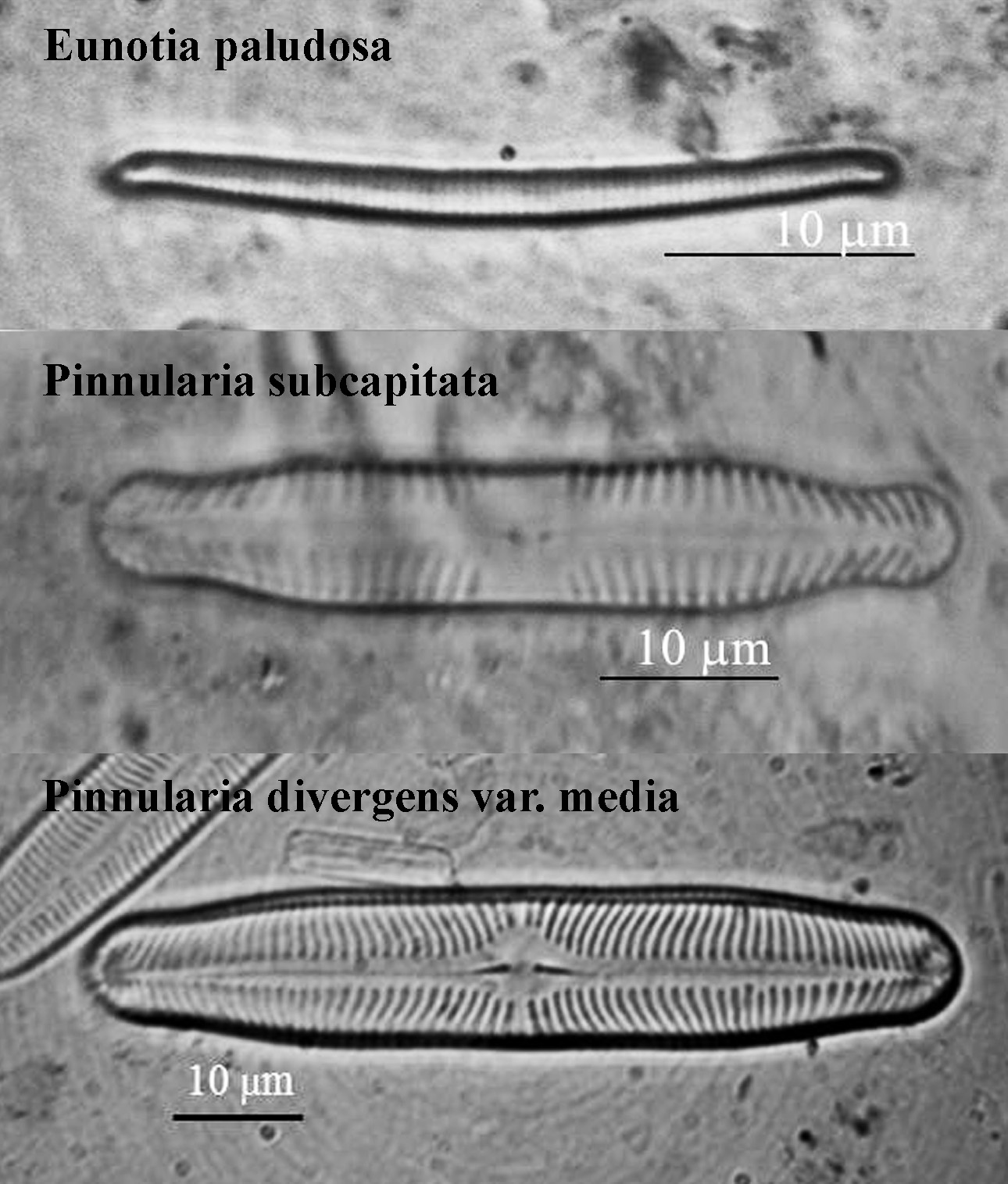Home / Research with students /
22/06/2016
Diatom communities in peat bogs from Transylvania and Bucovina
Student: Rákossy Izabella, BSc, 3rd year
Scientific advisor: Szigyártó Lídia, PhD, assistant professor
Peat bogs are considered important extreme habitats worlwide, because of the presence of acidic waters, high amounts of organic matter, especially humic acids, but low concentrations of inorganic substances, plant nutrients as well. As is Romania too, they usually are treated as nature reserves, mainly based on their special properties as habitats and the presence of rare vascular plants. However, peat bogs primarily are aquatic habitats for many organisms, such as diatoms, a group of algae chosen and studied in the frames of this research for their importance as water quality indicators, which can be found in almost all types of aquatic habitats. The goal of the research was to establish the list of inhabiting diatom species and varieties and to study the relations between community composition and environmental variables.
Results are based on 31 samples collected in the summer of 2014, from 22 sampling points located in 8 peat bogs in Transylvania and Bucovina. From these samples 262 diatom species and varieties were determined. 20% of these were new to Romanian algal flora, and 29% are consisted of diatoms rarely mentioned before in publications dealing with Romanian diatoms. There also seem to be significant differences between pond and stream inhabiting diatom communities: peat bog streams harbour more, but less extremophile diatom species (such as Pinnularia capitata, Pinnularia divergens var. media, Navicula rhynchocephala), while more acidic ponds are inhabited by only a few, but very abundent (80-90% relative abundances) and strongly extremophile (acidophilic, aerophilic) species (like Eunotia paludosa, Eunotia exigua).
Results of this research confirm that peat bogs are special ecological systems, extreme habitats with high biodiversity value on microscopic level too, and should contribute to maintaining the investigative and conservational interest in peat bogs.











